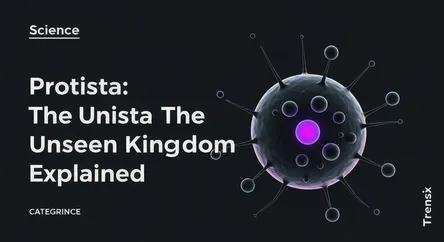Science
Protista: The Unseen Kingdom Explained

A look into the diverse Protista kingdom, its crucial role in our ecosystem, and its direct impact on human health and industry.
What is it?
Protista is a diverse kingdom of eukaryotic organisms that do not fit into the other eukaryotic kingdoms: Plantae, Animalia, or Fungi. Often called the "junk drawer" of taxonomy, this group includes a vast array of life forms. Most protists are unicellular and microscopic, though some, like kelp, are large and multicellular. They typically live in aquatic or moist environments. Protists exhibit various methods of nutrition; they can be photosynthetic like plants (algae), heterotrophic like animals (protozoa), or decomposers like fungi (slime molds).
Why is it trending?
The Protista kingdom is perpetually relevant in science due to its fundamental ecological roles. Photosynthetic protists, like algae, are major producers, forming the base of many aquatic food chains and generating nearly half of the world's oxygen. Many protists are also essential decomposers, breaking down dead organic matter and recycling vital nutrients back into the ecosystem. Their incredible diversity represents a vast frontier for scientific research, from understanding the evolution of multicellular life to discovering new applications in biotechnology and medicine.
How does it affect people?
Protists have a significant dual impact on human life. Beneficially, they are a food source (e.g., seaweed), and substances extracted from algae are used as thickeners in foods like ice cream and pudding. They are also important in medical research and the production of biofuels. However, some protists are harmful pathogens. Parasitic protists cause devastating diseases such as malaria (Plasmodium), African sleeping sickness (Trypanosoma), and amoebic dysentery. Additionally, certain marine protists can multiply rapidly, creating harmful algal blooms or "red tides" that release toxins deadly to fish and potentially harmful to humans.